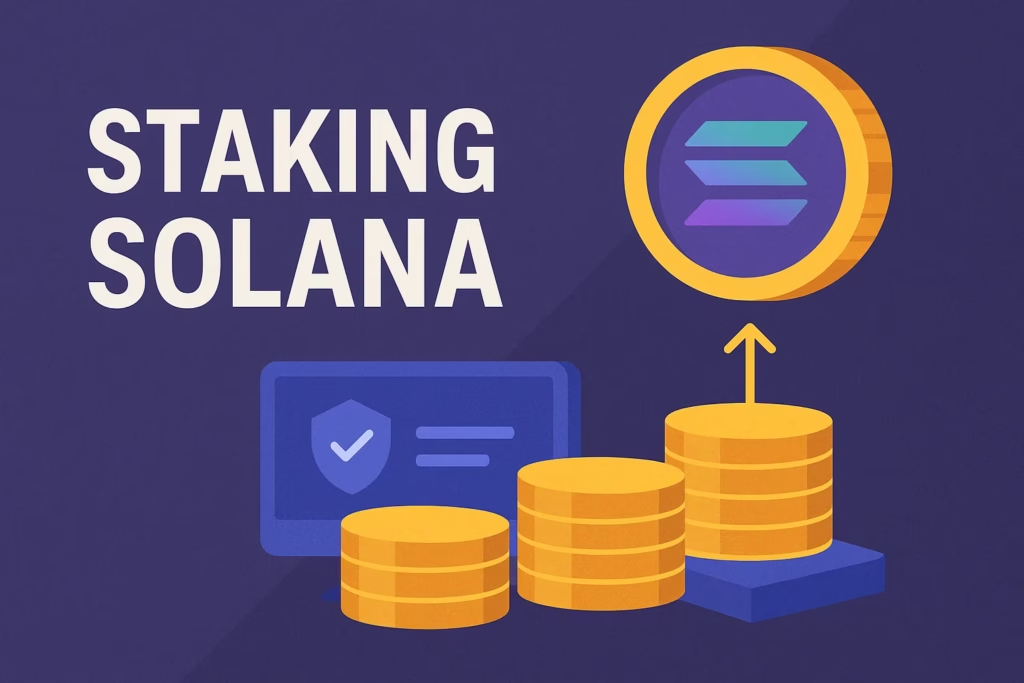
- Stake SOL easily using Phantom Wallet in 2025.
- Choose between native (beginner-friendly) and liquid (more flexible) staking.
- Understand unstaking processes and associated fees.
- Be mindful of security, validator selection, and tax obligations.
- Maintain and update your guide to ensure lasting search visibility.
What is Solana Staking
Staking Solana involves locking your SOL tokens in a wallet and delegating them to a validator. You earn rewards every two days and support network governance and security. This is one of the easiest and safest ways to earn passive income in the crypto world.
Related: How to Stake Terra LUNA 2.0: A Step-by-tep Beginner’s Guide
Staking Methods: Liquid vs Native
Liquid Staking: Keeps your SOL liquid. You receive Liquid Staking Tokens (LSTs) that can be used in DeFi platforms.
Native Staking: Locks SOL with a validator. It’s simple and ideal for beginners, but you lose access to the funds until unstaked.
Solana Staking Tax Rules (2025)
Income Tax: Paid when you gain access to staking rewards.
Capital Gains Tax: Paid when you sell or convert your SOL.
Note: Always consult a tax professional for jurisdiction-specific details.
Step-by-Step: How to Stake SOL
1. Choose and Set Up a Solana Wallet
Download the Phantom Wallet from its official website.

- Click “Create a new wallet.”
- Choose “Create a seed phrase wallet.”
- Save the recovery phrase securely.
- Create a password and set a username.
2. Fund Your Wallet
Transfer SOL from another wallet or buy directly using debit/credit card through Phantom’s partners like Robinhood or Topper.
3. Stake Your SOL
- Click “Solana” in your token list.
- Select “Start earning SOL.”
- Choose between Liquid or Native staking.
Liquid Staking: Phantom integrates with Jito. You’ll receive JitoSOL, which remains liquid and usable across DeFi.
Native Staking: Select a validator, input how much SOL to stake, and confirm. Rewards start within a few days.
How to Unstake SOL
Unstaking Native Staked SOL
- Click “Solana” in your wallet.
- Go to “Your Stake.”
- Select validator > “Unstake” > “Withdraw Stake.”
Unstaking Liquid Staking Tokens (LSTs)
- Select JitoSOL from token list.
- Click “More” > “Unstake.”
- Choose between:
- Immediate unstake: Small fee, fast access.
- Delayed unstake: Lower fee, takes 1–7 days.
Is Staking Solana Safe?
- Market Volatility: SOL prices can fluctuate.
- Validator Risk: Bad validator behavior affects rewards.
- Cybersecurity Threats: Keep your wallet secured and private keys offline.
- Network Downtime: Solana has faced outages in the past.
FAQ
There is no official minimum, but the practical minimum is around 0.01 SOL due to transaction and validator requirements.
Yes, Phantom Wallet supports both native and liquid staking via Jito, making it easy to stake Solana (SOL) in 2025, even for beginners.
Staking rewards typically range from 6% to 8% APY, depending on your chosen validator’s performance and the current network conditions.
Native staking locks your SOL with a validator until you unstake. Liquid staking gives you Liquid Staking Tokens (LSTs) like JitoSOL, which remain usable in DeFi apps.
Solana staking rewards are paid every two days, during each epoch, making it a consistent source of passive income.
Yes, but risks include validator slashing, market fluctuations, and network downtimes. Always choose reputable validators and secure your wallet.
For native staking: go to “Your stake” > select your validator > click “Unstake” and “Withdraw Stake.”
For liquid staking: select JitoSOL > More > Unstake, and choose either delayed or immediate withdrawal.
Yes. In the U.S., staking rewards are subject to income tax when earned and capital gains tax when sold or converted. Consult a tax expert for personalized advice.
Only if you use liquid staking. Tokens like JitoSOL allow you to participate in Solana DeFi while continuing to earn staking rewards.
Your rewards may be reduced, but your original SOL is not lost. This is why it’s important to delegate to trusted and well-performing validators.




